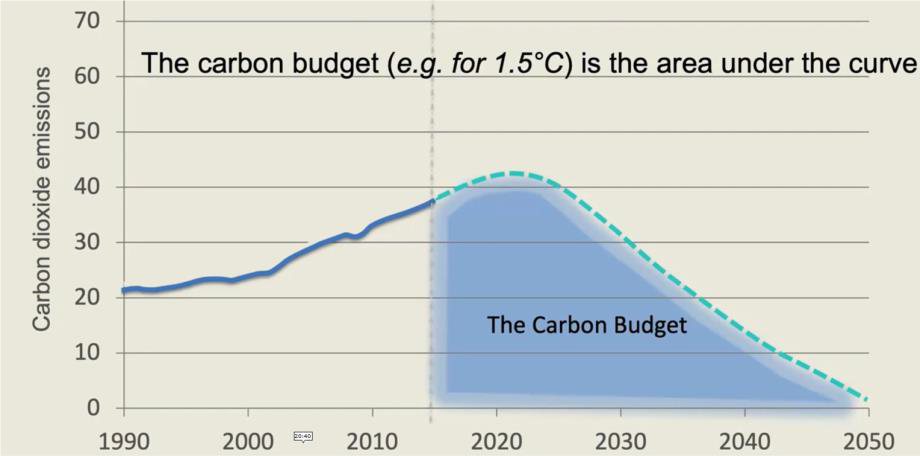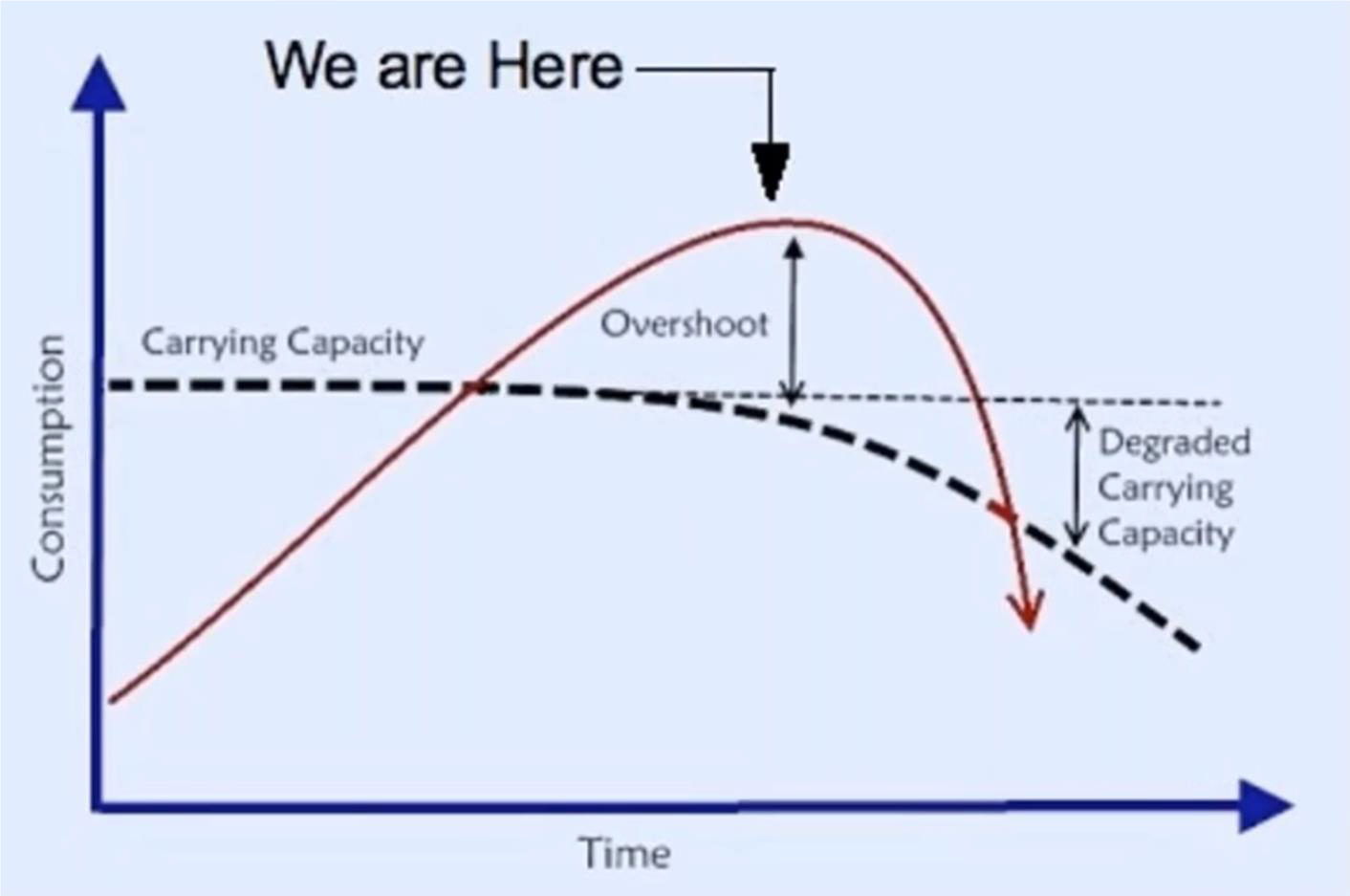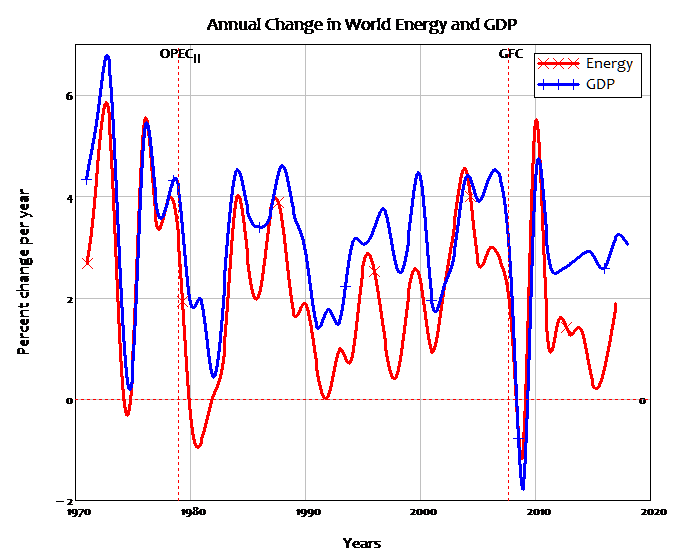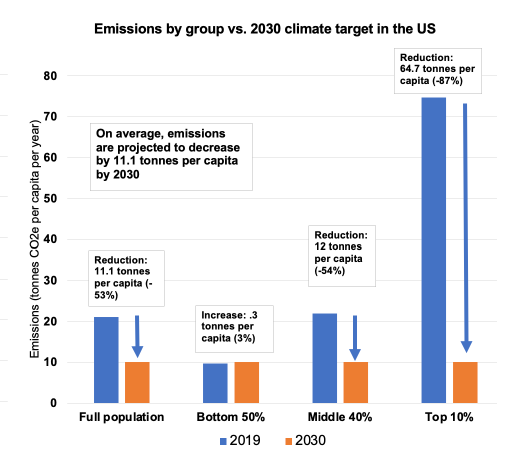SENIORS CLIMATE ACTION NETWORK (SCAN)
Reducing Consumption
At the global level, we have been living beyond our means for many decades due to our increases in population and consumption of energy per capita. We have already overshot the carrying capacity of our planet Earth. By doing so, excessive consumption per capita, especially in the rich countries such as New Zealand, has continuously degraded Earth’s carrying capacity to support the same number of life forms, including that of humans. For more detail, see our website page The Problem Explained
Climate change is but only one symptom of exceeding planetary boundaries. Unabated climate change has been globally acknowledged and accepted as being an existential threat to humans and other life forms. The 2015 Paris Agreement was adopted by a resolution of the United Nations General Assembly to avoid this existential risk. The target of the 2015 Paris Agreement was to hold the global average temperature to well below 2° Celsius above pre-industrial levels and to pursue efforts to limit the temperature increases to 1.5° Celsius. The 2015 Paris Agreement recognised that business-as-usual emissions of greenhouse gases must be curbed. Adoption of a global carbon budget was agreed upon by almost all nations. The budget is an annual reducing budget, the total size of which is represented by the area under the curve of projected reductions in carbon dioxide emissions. In 2015, a carbon budget targeted to decline to net zero by 2050 was deemed to be sufficient mitigation.
Subsequent research by the Intergovernmental Panel on Climate Change (IPPC) has revised the urgency to reduce greenhouse gas emissions. The IPCC AR6 Report of 2021 indicates that the remaining carbon budget required to remain within 1.5° C of global warming with 66% probability is 400 billion tonnes of CO2 and 300 billion tonnes with 83% probability. On a 400 billion tonnes carbon budget, an average country share of the global carbon budget would run out in 9 years. For a high polluting county such as the United Kingdom, its share of the carbon budget would run out in 3 years.
There is a direct relationship between economic activity – production and consumption of goods and services – with global production and consumption of energy. The figure below shows annual changes in world energy and GDP. The correlation coefficient is a high 0.83 (Keen, 2021).
There is a direct relationship between economic activity – production and consumption of goods and services – with global production and consumption of energy. The figure below shows annual changes in world energy and GDP. The correlation coefficient is a high 0.83 (Keen, 2021).
Goods and services currently use combinations of different forms of fossil fuels which emit different greenhouse gases to the atmosphere – carbon dioxide (CO2), methane (CH4), nitrous dioxide (N2O), etc. There is a direct relationship between the consumption of goods and services and the emissions of greenhouse gases while we continue to make use of fossil fuels as our primary energy source. By reducing our consumption of goods and services which currently make use of fossil fuels, we reduce our emissions of greenhouse gases. In doing so, we would also reduce our current levels of mining minerals, an activity which pollutes the surrounding environment.
Modern humans need to continue using high-grade energy and materials to survive. The alternative is to go back to a hunter-gatherers life style, but that is possible only with a greatly reduced population. At the same time as we reduce our consumption of fossil fuel based goods and services, we need to transition to renewable energy and infrastructure. Production of renewable energy requires the use of not only the direct use of high-grade energy, but also scarce materials which, in turn, requires energy and materials to mine. Continuous production of energy by renewables requires repetitive cycles of replacing solar panels and wind turbines etc. Replacement of renewables has its own limits due to the scarcity of materials and the physical impossibility of 100% recycling. The term “replaceables” is a more correct description than “renewables”.
A transition to renewables/replaceables requires major investments of fossil fuels because the scale of current renewables/replacables cannot initially produce more renewables/replaceables without the use of key fossil fuels. We need to invest fossil fuels to manufacture renewables/replaceables on a reducing carbon budget while staying on track within our targets of net zero carbon emissions by 2050, if not earlier. One way out of this predicament is by voluntarily reducing our consumption of fossil-fuel based goods and services to a sufficient level within our declining carbon budget where we have a surplus of fossil fuels within our diminishing carbon budget which can be invested in renewables/replacables.
Modern humans need to continue using high-grade energy and materials to survive. The alternative is to go back to a hunter-gatherers life style, but that is possible only with a greatly reduced population. At the same time as we reduce our consumption of fossil fuel based goods and services, we need to transition to renewable energy and infrastructure. Production of renewable energy requires the use of not only the direct use of high-grade energy, but also scarce materials which, in turn, requires energy and materials to mine. Continuous production of energy by renewables requires repetitive cycles of replacing solar panels and wind turbines etc. Replacement of renewables has its own limits due to the scarcity of materials and the physical impossibility of 100% recycling. The term “replaceables” is a more correct description than “renewables”.
A transition to renewables/replaceables requires major investments of fossil fuels because the scale of current renewables/replacables cannot initially produce more renewables/replaceables without the use of key fossil fuels. We need to invest fossil fuels to manufacture renewables/replaceables on a reducing carbon budget while staying on track within our targets of net zero carbon emissions by 2050, if not earlier. One way out of this predicament is by voluntarily reducing our consumption of fossil-fuel based goods and services to a sufficient level within our declining carbon budget where we have a surplus of fossil fuels within our diminishing carbon budget which can be invested in renewables/replacables.
Those on higher income will have a greater surplus than others should they participate equally in our global efforts to mitigate the impact of climate change. Part of this surplus could be used to invest in personal further long-term reductions in CO2e or gifted to community projects which develop replaceables. Some people on extreme high incomes would have much greater surpluses which, if spent on goods and services, would result in further greenhouse gas emissions.
Money is a human construct which serves as a medium of exchange, a store of value, and a claim on current and future resources which is supported by our institutions. Greater claims of energy and resources by a minority does not increase the abundance of remaining resources. These claims, instead, hasten the exhaustion of these resources which reduces the level of remaining resources which could be more equitably used by current and future generations. Squandering resources for unnecessary private consumption leaves behind less concentrated resources which are more energy intensive for current and future generations to mine.
Our total supply of energy from renewables/replacables per capita will be limited in the future and communities can ill afford a minority of citizens from squandering the following resources on private transport - consumption of electricity, embodied energy, materials to construct the heavyweight EVs, and scarce materials for batteries - when the community has a greater public need and use for the same energy and materials. It is physically impossible for everyone to replace their ICE car with an electric car. There are, however, less energy intensive options available - walking, bikes, electric bikes and scooters, community shared electric cars, and public electric transport.
Excessive claims on resources need to cease. There are ways and means of doing this. The most effective and equitable way is rationing. An example is Tradable Energy Quotas (TEQs). Relying on Carbon Taxes and the market place alone to restrict consumption does not prevent those on higher incomes from continuing to contribute the highest CO2e emissions per capita. Progressive Taxes on high incomes would help to reduce consumption by those on higher incomes. Alternatively, some people who are able to generate income at a higher rate per hour could choose to work fewer hours and convert their potential greater surplus into more leisure time.
Money is a human construct which serves as a medium of exchange, a store of value, and a claim on current and future resources which is supported by our institutions. Greater claims of energy and resources by a minority does not increase the abundance of remaining resources. These claims, instead, hasten the exhaustion of these resources which reduces the level of remaining resources which could be more equitably used by current and future generations. Squandering resources for unnecessary private consumption leaves behind less concentrated resources which are more energy intensive for current and future generations to mine.
Our total supply of energy from renewables/replacables per capita will be limited in the future and communities can ill afford a minority of citizens from squandering the following resources on private transport - consumption of electricity, embodied energy, materials to construct the heavyweight EVs, and scarce materials for batteries - when the community has a greater public need and use for the same energy and materials. It is physically impossible for everyone to replace their ICE car with an electric car. There are, however, less energy intensive options available - walking, bikes, electric bikes and scooters, community shared electric cars, and public electric transport.
Excessive claims on resources need to cease. There are ways and means of doing this. The most effective and equitable way is rationing. An example is Tradable Energy Quotas (TEQs). Relying on Carbon Taxes and the market place alone to restrict consumption does not prevent those on higher incomes from continuing to contribute the highest CO2e emissions per capita. Progressive Taxes on high incomes would help to reduce consumption by those on higher incomes. Alternatively, some people who are able to generate income at a higher rate per hour could choose to work fewer hours and convert their potential greater surplus into more leisure time.





WHY WE NEED TO REDUCE OUR CONSUMPTION
All actions to reduce our greenhouse gas emissions involve reductions in consumption. Those on low incomes have less ability to further reduce their carbon footprints than those on higher incomes. The adjacent figure shows the extent that people in the United States need to reduce their consumption to attain a 3.0 tonne CO2e per capita carbon footprint. The bottom half of the population in the United States is already 3% below the target. The middle 40% and top 10% would need to reduce the CO2e emissions by 54% and 87% respectively to achieve the target of 3.0 tonnes of CO2e emissions by 2030. According to Chancel (2021), the bottom 50% of other rich countries are already below a 2030 target of 3.0 tonnes of CO2e per capita, or close to it. The figure demonstrates that the key to global reductions in greenhouse gas emissions is for all citizens of the world to participate equally. If those on higher incomes do not participate, then the efforts of all others will be in vain. Participation can be voluntary or enforced by our institutions. Failing that, nature itself in due course will enforce a reduction in consumption
Higher levels of material production and consumption in any nation enable higher standards of living and initially higher levels of wellbeing and life expectancy. But when a nation has reached a certain standard of living as indicated by average per-capita income, additional per-capita income does not necessarily result in greater wellbeing or happiness and nor does it result in greatly extended life expectancy. For example, the adjacent figure shows happiness and satisfaction with life for people within each country plotted along the Y-axis ranging from 30% to 100% of the population with GNP plotted along the X-axis in United States 1995 dollars. About 88% of New Zealanders are happy and satisfied with life with a GNP per capita of $16,000 compared to about 90% of those in the United States with a GNP per capita of $27,00. About 78% of Brazilians are happy and satisfied with life with a GNP per capita of only $3,000. It is possible to live well on a reduced level of consumption (Inglehart & Kingman 2000).
Excessive consumption per capita has degraded Earth’s carrying capacity to support life on Earth.
Climate change is but one of many symptoms of exceeding planetary boundaries.
As part of the 2015 Paris Agreement, nations agreed to adopt reducing carbon budgets to limit an increase in climate change temperatures above pre-industrial levels.
Current production of goods and services requires the use of fossil fuels,
By reducing our consumption of goods and services, we reduce our emissions of greenhouse gases.
A transition from fossil fuels to renewable energy initially requires the continued use of fossil fuels to manufacture renewables on a declining carbon budget.
We need to voluntarily reduce our consumption of fossil-fuel based goods and services to enable an investment of fossil fuels to manufacture renewables while staying within a declining carbon budget,
Everyone needs to participate equally in reducing their consumption. If those on current high carbon footprints do not participate, then the efforts of all others will be in vain.
Those on higher income will have a greater surplus than others should they participate equally in our global efforts to mitigate the impact of climate change.
Any surpluses should not be used on consumption. Surpluses should be used to invest in long-term reductions in CO2e emissions while remaining within our global carbon budgets.
Those who are able to generate income at a higher rate per hour could choose to work fewer hours and convert some of their potential surplus income into more leisure time.
Our total supply of energy from renewables/replacables per capita will be limited in the future
It is physically impossible for everyone to replace their ICE car with an electric car. There are many less energy intensive modes of transport options available.
Excessive use of resources need to cease. After reaching a moderate standard of living, additional per-capita income does not necessarily result in greater wellbeing or happiness and nor does it result in greatly extended life expectancy.
Climate change is but one of many symptoms of exceeding planetary boundaries.
As part of the 2015 Paris Agreement, nations agreed to adopt reducing carbon budgets to limit an increase in climate change temperatures above pre-industrial levels.
Current production of goods and services requires the use of fossil fuels,
By reducing our consumption of goods and services, we reduce our emissions of greenhouse gases.
A transition from fossil fuels to renewable energy initially requires the continued use of fossil fuels to manufacture renewables on a declining carbon budget.
We need to voluntarily reduce our consumption of fossil-fuel based goods and services to enable an investment of fossil fuels to manufacture renewables while staying within a declining carbon budget,
Everyone needs to participate equally in reducing their consumption. If those on current high carbon footprints do not participate, then the efforts of all others will be in vain.
Those on higher income will have a greater surplus than others should they participate equally in our global efforts to mitigate the impact of climate change.
Any surpluses should not be used on consumption. Surpluses should be used to invest in long-term reductions in CO2e emissions while remaining within our global carbon budgets.
Those who are able to generate income at a higher rate per hour could choose to work fewer hours and convert some of their potential surplus income into more leisure time.
Our total supply of energy from renewables/replacables per capita will be limited in the future
It is physically impossible for everyone to replace their ICE car with an electric car. There are many less energy intensive modes of transport options available.
Excessive use of resources need to cease. After reaching a moderate standard of living, additional per-capita income does not necessarily result in greater wellbeing or happiness and nor does it result in greatly extended life expectancy.
